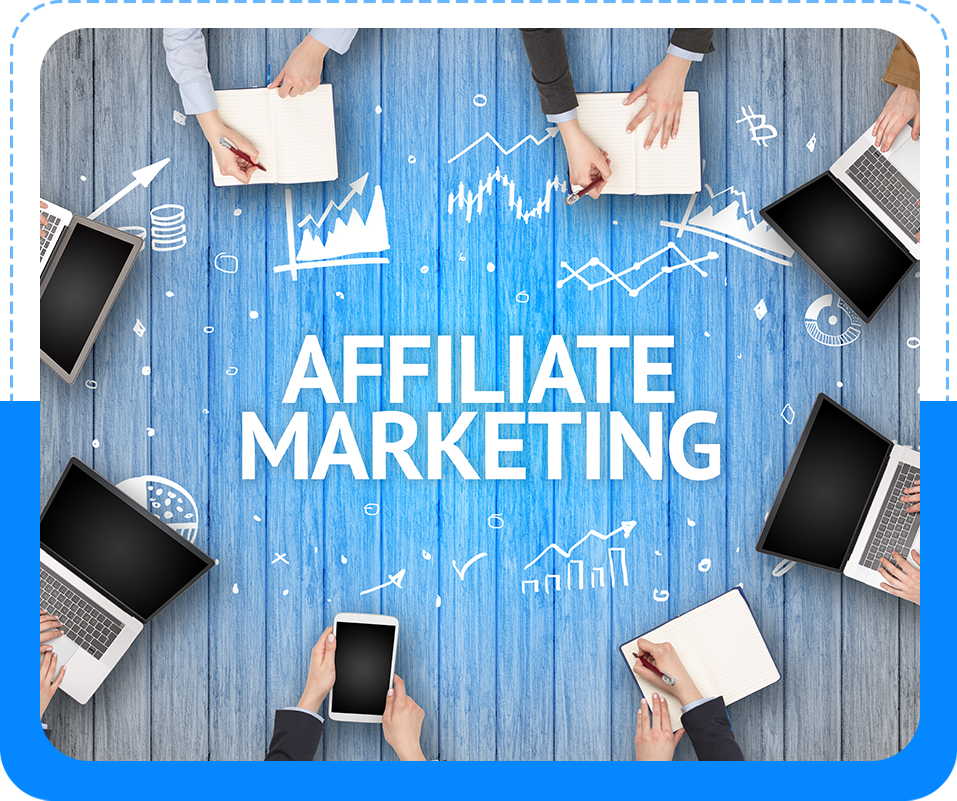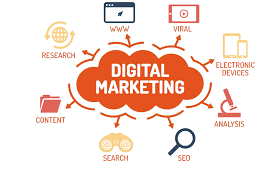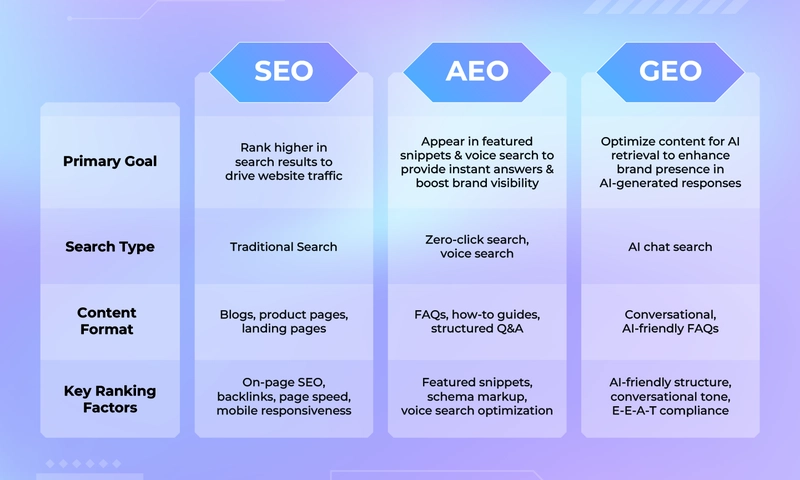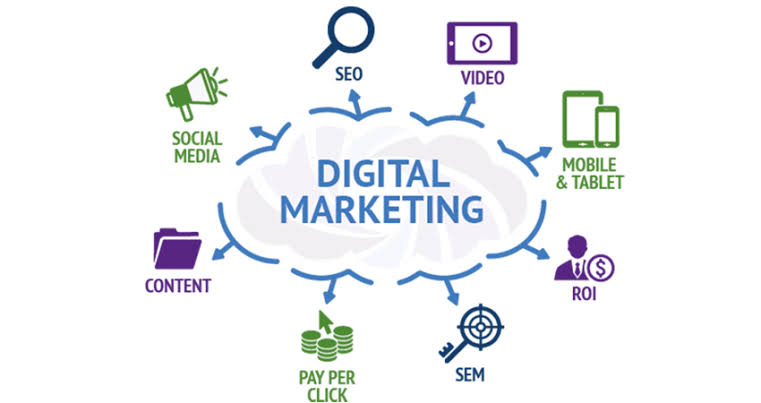Digital Marketing. In today’s hyper-connected world, digital marketing isn’t just a buzzword; it’s the very heartbeat of business growth and survival. It fundamentally transforms how businesses reach potential customers, moving beyond traditional boundaries to engage vast online audiences. This strategic shift allows for unprecedented precision in targeting, ensuring your message resonates with the right people at the right time.
The power of digital marketing lies in its ability to build direct connections, foster customer relationships, and drive measurable sales online. By leveraging channels from search engines to social media, businesses can optimize their outreach, adapting strategies in real-time. This dynamic approach is key to thriving and scaling in a competitive digital landscape.
Digital marketing: What exactly is it and why does it matter for your business?
In today’s hyper-connected world, digital marketing isn’t just a buzzword; it’s the very heartbeat of business growth and survival. Think about it: when was the last time you bought something without first doing a quick online search or checking out a brand’s social media presence? Likely, it’s been a while. This shift in consumer behavior means that if your business isn’t visible and engaging online, it’s virtually invisible to a vast segment of your potential customers. Moreover, digital marketing offers an unparalleled ability to reach specific audiences, measure results with precision, and adapt strategies in real-time, giving businesses a crucial edge in a fiercely competitive landscape.
So, what does this truly mean for you, whether you’re a seasoned professional or a business owner looking to expand? Digital marketing encompasses all marketing efforts that use an electronic device or the internet. Businesses leverage digital channels such as search engines, social media, email, and other websites to connect with current and prospective customers. It’s an expansive field, yet its core purpose remains consistent: to attract, engage, and convert. Unlike traditional methods, digital marketing provides a direct line to your audience, fostering deeper connections and allowing for highly personalized interactions. Imagine tailoring your message to someone based on their Browse history or interests – that’s the power we’re talking about.
How does digital marketing help businesses grow and scale?
Have you ever wondered how some businesses seem to explode with growth, reaching customers far beyond their local storefront? Often, the answer lies squarely in their robust digital marketing strategies. Essentially, digital marketing acts like a powerful growth engine, allowing businesses to expand their reach exponentially and scale their operations efficiently. Consider a small artisanal bakery; through local SEO and targeted social media ads, they can transform from a neighborhood secret into a brand known across the city, eventually even nationwide with effective e-commerce.
Think of it like this: traditional marketing often feels like casting a wide net, hoping to catch something. Digital marketing, on the other hand, is akin to a precision fishing expedition. You’re not just hoping; you’re actively targeting. For instance, search engine optimization (SEO) ensures your business appears when potential customers are actively looking for your products or services. When someone types “best organic coffee beans” into Google, an optimized website will pop up, guiding them directly to your digital doorstep.
This isn’t just about keywords anymore; it’s also about understanding the intent behind the search. Furthermore, with the rise of features like Google’s People Also Ask (PAA) boxes, optimizing your content to answer common related questions can significantly boost visibility. If a user asks, “How is organic coffee different?” and your site provides a clear answer within a PAA snippet, you’re building authority and drawing in a wider audience. This direct relevance translates into higher-quality leads and, consequently, increased sales.
Moreover, the scalability of digital marketing is truly remarkable. Imagine you’ve developed an innovative software solution. With a strong content marketing strategy, including engaging blog posts and informative webinars, you can educate a global audience about your product. This isn’t confined by geographical boundaries or the limitations of a physical sales team. Furthermore, tools like email marketing allow you to nurture leads automatically, sending personalized sequences that guide potential customers through their buying journey without requiring constant manual intervention. This automation frees up valuable resources, letting your team focus on innovation and core business functions, rather than repetitive outreach.
Finally, the data-driven nature of digital marketing provides an unparalleled advantage for scaling. Every click, every impression, every conversion can be tracked, analyzed, and optimized. If a particular ad campaign isn’t performing well, you know almost immediately and can adjust it. If a specific keyword is driving high-value traffic, you can double down on it. This continuous feedback loop ensures that your marketing spend is always working as hard as possible, leading to more efficient customer acquisition and a stronger return on investment. It’s like having a dedicated team of analysts constantly refining your outreach, pushing you toward consistent, measurable growth.

What are the main types of digital marketing?
The landscape of digital marketing is vast, almost like a sprawling city with many distinct neighborhoods, each with its unique purpose and character. Understanding these different types is crucial, because, ultimately, a successful digital strategy often involves weaving several of them together. You wouldn’t build a house with just a hammer, right? Similarly, a comprehensive digital presence requires a diverse toolkit.
Let’s dive into some of the most prominent areas. First, we have Search Engine Optimization (SEO). This is about making your website visible when people search for products or services related to your business on search engines like Google. It’s not about paying for ads; instead, it’s about optimizing your website’s content, structure, and technical elements so that it naturally ranks higher in organic search results. Think of it as making your storefront easily findable on the busiest street, simply by being well-organized and clearly signed.
For instance, if you sell handmade jewelry, strong SEO ensures that when someone searches for “unique silver earrings,” your site is among the first they see. This isn’t a quick fix, but a sustained effort that builds long-term authority and trust with both search engines and users. With the evolution of search, this also includes focusing on Answer Engine Optimization (AEO), optimizing content to directly answer user questions, particularly for voice search and featured snippets that aim to provide immediate answers.
Then there’s Content Marketing. This involves creating and distributing valuable, relevant, and consistent content to attract and retain a clearly defined audience. This can include blog posts, articles, videos, infographics, e-books, and more. The goal here isn’t to overtly sell but to provide genuine value, establish expertise, and build a relationship with your audience. For example, a financial advisor might publish articles explaining complex investment strategies in simple terms, or a cooking brand might share delicious recipes.
This approach subtly positions you as a trusted resource, and over time, that trust converts into customer loyalty and sales. It’s about serving your audience, not just selling to them. This also ties into Generative Engine Optimization (GEO), where content is crafted not just for traditional search but also to be digestible and useful for generative AI models that may summarize or create new content based on your reliable information.
Social Media Marketing is another cornerstone. This involves using social media platforms like Instagram, Facebook, LinkedIn, TikTok, and X (formerly Twitter) to connect with your audience, build brand awareness, drive website traffic, and generate sales. It’s about participating in conversations, sharing engaging content, and building a community around your brand. A clothing brand, for instance, might use Instagram to showcase new collections with stunning visuals and interact directly with customers through comments and DMs. Social media offers an unparalleled opportunity for real-time engagement and fostering brand personality, which can be incredibly powerful for humanizing your business.
Furthermore, we have Pay-Per-Click (PPC) Advertising. Unlike SEO, PPC is a paid advertising model where advertisers pay a fee each time one of their ads is clicked. Google Ads is perhaps the most well-known platform for PPC, allowing businesses to bid on keywords and display ads in search results. It’s like buying premium real estate at the top of a search page, guaranteeing visibility. This is particularly effective for driving immediate traffic and generating leads quickly, especially for new products or promotions. You see the results almost instantly, and you can precisely control your budget and target specific demographics.
Email Marketing remains incredibly potent. This involves sending direct marketing messages to a group of people via email. It’s often used to build relationships with prospects, nurture leads, inform customers about new products, and send promotional offers. Think of it as having a direct, personal line to your audience’s inbox. Many businesses use email to send out newsletters, exclusive discounts, or personalized product recommendations based on past purchases. It’s a highly effective way to encourage repeat business and foster strong customer loyalty because it feels more intimate and direct than many other forms of digital communication.
Finally, Affiliate Marketing and Influencer Marketing also play significant roles. Affiliate marketing involves partnering with individuals or other businesses (affiliates) who promote your products or services and earn a commission on sales generated through their unique referral link. Influencer marketing, a subset of affiliate marketing, leverages individuals with a significant online following (influencers) to endorse your products. These approaches capitalize on established trust and reach, allowing your brand to tap into pre-existing communities. For example, a beauty brand might send products to a popular beauty blogger who then reviews them for their thousands of followers, driving both awareness and sales. Each of these types, while distinct, can be combined to create a truly formidable digital marketing presence.

How does digital marketing impact sales and revenue?
You’ve probably heard the saying, “You have to spend money to make money,” but with digital marketing, it’s more precise: “You invest strategically in the digital realm to generate measurable sales and sustainable revenue.” This isn’t just about getting eyes on your brand; it’s about turning those eyes into paying customers. So, how does this digital alchemy actually happen, impacting your bottom line directly?
First, consider the increased reach and targeting capabilities. Unlike traditional advertising that sprays messages broadly, digital marketing allows for hyper-targeted campaigns. Imagine a company selling specialized industrial equipment. Instead of advertising in a national newspaper, they can use LinkedIn ads to specifically target engineers in the manufacturing sector who work for companies of a certain size. This precision ensures that your marketing budget is spent reaching individuals who are genuinely likely to be interested, significantly increasing the probability of a sale. It’s like having a highly trained sales representative who knows exactly who to talk to.
Next, enhanced customer engagement plays a crucial role in converting interest into revenue. When customers interact with your brand on social media, through email newsletters, or by consuming your content, they’re building a relationship. This engagement fosters trust and familiarity. For instance, a software company offering free trials and responsive customer support via chat on their website can guide potential users through the onboarding process, addressing concerns immediately. This positive interaction makes the sales process smoother and reduces abandonment rates, ultimately leading to more conversions. It’s about building a rapport, much like a skilled salesperson nurtures a lead.
Furthermore, data-driven optimization is where digital marketing truly shines in its impact on sales. Every click, every impression, every conversion point provides valuable data. This information isn’t just for show; it’s a powerful feedback loop. If an e-commerce store notices that a particular product page has a high bounce rate, they can analyze user behavior, perhaps discovering that the product images are low quality or the description is unclear.
By making data-informed adjustments, they can optimize the page for better engagement and, consequently, higher sales. This continuous improvement cycle directly translates into more efficient marketing spend and improved conversion rates, boosting revenue over time. According to a HubSpot report, companies that leverage marketing automation, a key component of data-driven digital marketing, see a 451% increase in qualified leads.
Finally, cost-effectiveness and measurable ROI contribute significantly to digital marketing’s impact on revenue. While some digital marketing efforts require upfront investment, the ability to precisely track performance allows businesses to calculate their return on investment (ROI) with remarkable accuracy. This means you can identify which channels and campaigns are most profitable and allocate your resources accordingly. Consider a local gym running Facebook ads: they can track exactly how many sign-ups came directly from those ads, compare it to the ad spend, and determine the profitability.
This transparency contrasts sharply with traditional advertising, where measuring direct impact on sales can be notoriously difficult. The bottom line? Digital marketing empowers businesses to make smarter, more profitable decisions that directly fuel sales and revenue growth.
What digital marketing strategies work best for lead generation?
Generating leads is the lifeblood of any business, and in the digital age, digital marketing offers a plethora of strategies to attract potential customers. But with so many options, how do you know which ones truly work best for filling your sales funnel? It’s not about throwing darts in the dark; it’s about strategic application.
One of the most effective strategies for lead generation is Content Marketing, especially when it’s tailored to address specific pain points of your target audience. Think about it: people go online to find solutions to their problems, learn new things, or be entertained. If your content provides that value, you’re building trust and establishing authority. For example, a B2B software company might create in-depth whitepapers or webinars on how to improve operational efficiency, offering them as downloadable resources in exchange for an email address. This positions them as an expert and captures valuable lead information. It’s like a knowledgeable guide offering directions; those who want to reach their destination will gladly take the map.
Closely related, Search Engine Optimization (SEO) is paramount for capturing “intent-rich” leads. When someone types a query into a search engine, they’re actively looking for something. By optimizing your website for relevant keywords, you ensure your business appears at the moment a potential customer is expressing a need. For instance, if you sell cybersecurity solutions, ranking high for terms like “data breach prevention for small businesses” will bring highly qualified leads directly to your doorstep.
These aren’t just random visitors; these are individuals actively seeking the solutions you provide. According to BrightEdge, organic search drives 53% of all website traffic, underscoring its importance for lead generation. Furthermore, considering Google’s People Also Ask (PAA) questions in your content strategy can significantly boost lead generation by answering related user queries and establishing your authority, leading to more clicks and engagement.
Pay-Per-Click (PPC) Advertising, particularly on search engines, is another incredibly powerful lead generation tool, especially for rapid results. While SEO builds long-term organic traffic, PPC allows you to jump to the top of search results almost instantly for specific keywords. This is ideal for promoting new products, special offers, or targeting highly competitive terms where organic ranking might take time. A real estate agent, for example, could run PPC ads for “houses for sale in [city name],” directly capturing leads who are actively looking to buy. The beauty of PPC lies in its immediate visibility and granular targeting options, ensuring your ad spend reaches the most relevant audience.
Furthermore, Social Media Marketing excels at lead generation through a combination of targeted advertising and organic engagement. Platforms like LinkedIn are fantastic for B2B lead generation, allowing you to target professionals by industry, job title, and company size. Facebook and Instagram, on the other hand, are excellent for B2C, leveraging demographic and interest-based targeting. Consider a fitness coach running a lead ad campaign on Facebook, offering a free workout guide in exchange for an email. These ads integrate seamlessly into the user’s feed, making the lead capture process incredibly smooth and non-intrusive. It’s about meeting your potential customers where they already spend their time.
Finally, Email Marketing serves a dual purpose in lead generation: it can directly generate leads through subscription forms on your website, and it’s essential for nurturing those leads once captured. Once you have an email address, you can build a relationship through automated email sequences, offering valuable content, testimonials, and eventually, product pitches.
This systematic nurturing process moves leads down the sales funnel, transforming initial interest into tangible sales opportunities. For example, after someone downloads an e-book on project management, you might send a series of emails offering tips, case studies, and eventually an invitation to a demo of your project management software. Ultimately, combining these diverse digital marketing strategies creates a robust and continuous flow of high-quality leads for your business.

Why is analyzing data crucial for digital marketing success?
Imagine trying to navigate a complex city without a map or GPS. You might eventually reach your destination, but it would be far less efficient, and you’d likely make many wrong turns along the way. In the realm of digital marketing, data analysis acts as your indispensable GPS, guiding every decision and ensuring you’re always on the most direct path to success. Without it, you’re essentially operating in the dark, making assumptions rather than informed choices.
First and foremost, data provides unparalleled insights into audience behavior. Think about your website visitors. Where do they come from? What pages do they spend the most time on? Where do they drop off? Analytics tools can answer these questions with precision. For example, if an e-commerce site notices a high abandonment rate on their checkout page, data can pinpoint the exact step where users are leaving. Perhaps it’s an unexpected shipping cost, a cumbersome form, or a lack of trusted payment options.
Identifying this specific friction point allows for targeted improvements that directly impact conversion rates. This isn’t guesswork; it’s a factual understanding of how your audience interacts with your digital assets. This also extends to how users interact with snippets and generated content, making Answer Engine Optimization (AEO) and Generative Engine Optimization (GEO) highly data-dependent, requiring analysis of what questions are being asked and how AI models are interpreting information.
Furthermore, analyzing data allows for optimization of marketing spend and resource allocation. Every dollar invested in digital marketing should ideally generate a return. By tracking metrics like cost-per-click (CPC), cost-per-lead (CPL), and return on ad spend (ROAS), businesses can determine which campaigns and channels are most effective.
For instance, a company running multiple social media ad campaigns can compare the performance of each one. If ads on Instagram are generating leads at a significantly lower cost than those on Facebook, they can reallocate their budget to the more efficient channel. This continuous optimization prevents wasted spend and ensures that resources are always directed towards the highest-performing initiatives. It’s like having a financial advisor constantly telling you where to invest for maximum returns.
Consider, also, the power of personalization and improved customer experience. Data enables you to segment your audience based on demographics, interests, past behavior, and more. This segmentation allows for highly personalized marketing messages that resonate deeply with individual customers. A streaming service, for example, uses viewing data to recommend movies and shows, creating a highly tailored and engaging experience. This level of personalization not only increases customer satisfaction but also drives higher engagement rates, click-through rates, and ultimately, conversions. It’s about treating each customer as an individual, rather than just another number.
Finally, data analysis is vital for identifying trends and anticipating future opportunities or challenges. By monitoring performance over time, businesses can spot emerging patterns in consumer behavior, market shifts, or even the effectiveness of new digital tools. If a content creator notices a significant surge in video consumption on a particular platform, they can pivot their strategy to focus more on video content, capitalizing on the trend. Conversely, if a certain keyword is losing search volume, they can adapt their SEO strategy to target new, more relevant terms. In essence, data analysis provides the foresight needed to stay agile and competitive in the ever-evolving world of digital marketing, ensuring that your strategies are always relevant and impactful.

How can small businesses leverage digital marketing effectively?
For many small businesses, the world of digital marketing can feel daunting, like an enormous ocean with currents too strong to navigate. However, it’s precisely in this digital realm that small businesses, with their agility and close customer relationships, can truly thrive. You don’t need a massive budget to make a significant impact; you just need a smart, focused approach.
First, local SEO is an absolute game-changer for small businesses. Think about it: when someone in your neighborhood is looking for a “plumber near me” or “best pizza in [your city],” you want to be the first result they see. Optimizing your Google My Business profile is crucial here, ensuring your hours, address, phone number, and reviews are accurate and up-to-date.
Encourage customers to leave reviews, as these significantly boost your local search ranking and build trust. It’s like having the most prominent sign on Main Street, directing all local traffic right to your door. A recent study by BrightLocal indicated that 93% of consumers use online reviews to choose a local business. Furthermore, by strategically answering questions in Google’s People Also Ask (PAA) snippets related to local services, you can capture even more qualified local traffic.
Next, social media marketing on platforms where your target audience congregates is incredibly cost-effective and powerful. You don’t need to be on every platform; instead, identify where your ideal customers spend their time and focus your efforts there. For a local boutique, Instagram and Facebook might be perfect for showcasing products with appealing visuals and engaging with the community. For a B2B consultant, LinkedIn is probably the smarter choice for connecting with potential clients. The key is to be authentic, consistent, and genuinely engage with your followers. It’s about building a community around your brand, fostering loyalty that goes beyond just transactions.
Furthermore, email marketing provides a direct line to your existing customers and warm leads, nurturing relationships without high advertising costs. Encourage sign-ups on your website or at your physical location. Then, send out regular newsletters with valuable tips, exclusive offers, or updates about your business. For instance, a local bakery could send out a weekly email detailing their fresh bakes and special promotions. This keeps your business top-of-mind and encourages repeat purchases. It’s a personal touch that builds long-term customer relationships, turning one-time buyers into loyal advocates.
Moreover, leveraging content marketing doesn’t require a large editorial team. Even simple blog posts addressing common customer questions or short, informative videos can establish your expertise and attract organic traffic. A small gardening supply store, for example, could create short videos on “how to plant tomatoes in containers” or “common pest problems and solutions.”
This positions them as a helpful resource, attracting potential customers who are looking for advice and, consequently, products. It’s about sharing your knowledge, which subtly builds trust and positions you as an authority. In this vein, optimizing content for Answer Engine Optimization (AEO) means structuring your answers to be clear, concise, and directly address user queries, making your small business a go-to source for reliable information.
Finally, don’t underestimate the power of online reviews and reputation management. In the digital age, a handful of negative reviews can severely impact your business. Actively monitor review sites like Google, Yelp, and industry-specific platforms. Respond promptly and professionally to all reviews, both positive and negative. Addressing concerns publicly demonstrates your commitment to customer satisfaction and can turn a negative experience into a positive one. It’s about building and maintaining a stellar online reputation, which is incredibly important for attracting new customers. By focusing on these accessible yet impactful digital marketing strategies, small businesses can effectively compete with larger players and achieve significant growth.
What are the challenges in implementing digital marketing?
While the promise of digital marketing is undeniably appealing, the path to successful implementation isn’t always a smooth one. Just as navigating a new city can present unexpected detours, venturing into the digital landscape comes with its own set of challenges. Recognizing these hurdles upfront is the first step toward overcoming them.
One significant challenge is the sheer pace of change and technological evolution. The digital world moves at lightning speed. What worked wonders last year might be obsolete today. New platforms emerge, algorithms shift, and consumer behaviors evolve constantly. Keeping up with these changes requires continuous learning and adaptation.
Imagine trying to hit a moving target that also keeps changing its shape! For businesses, this means consistently investing in training, subscribing to industry updates, and being agile enough to pivot strategies quickly. It’s not a one-and-done setup; it’s an ongoing commitment to staying current. This is particularly true with the rapid advancements in AI, influencing how search engines work and giving rise to new optimization paradigms like Generative Engine Optimization (GEO).
Another hurdle is the increasing competition and saturation in many online spaces. As more businesses recognize the power of digital marketing, the digital arena becomes crowded. Standing out from the noise requires genuine creativity, strategic differentiation, and often, a higher investment in advertising to gain visibility. For example, if you’re trying to rank for a highly competitive keyword, you’re not just competing with direct rivals but also with massive brands that have extensive resources. This often means small businesses need to find niche markets or unique angles to truly capture attention. Furthermore, with platforms providing direct answers, effectively optimizing for Answer Engine Optimization (AEO) requires distinct content strategies to stand out.
Furthermore, data analysis and interpretation can be a significant challenge. While digital marketing generates a wealth of data, making sense of it and translating it into actionable insights requires specific skills. Many businesses collect data but struggle to understand what the numbers actually mean for their strategy. It’s like having a treasure map but not knowing how to read it. Without proper analysis, you might misinterpret trends, misallocate resources, or miss critical opportunities. This often necessitates either hiring skilled analysts or investing in advanced analytics tools and training. Understanding how users interact with features like Google’s People Also Ask (PAA) also adds another layer of data to interpret.
Then there’s the challenge of integrating different digital channels and maintaining consistency. Businesses often use multiple platforms—a website, social media, email, paid ads—but ensuring that all these channels work together harmoniously, conveying a consistent brand message and customer experience, can be complex. Imagine different musicians in an orchestra playing their own tunes without a conductor; it would be chaos. A disjointed digital marketing approach can confuse customers and dilute your brand’s impact. This requires a well-defined strategy and often, automation tools to streamline processes across platforms.
Finally, measuring return on investment (ROI) accurately can still be a challenge, particularly for more complex or long-term digital marketing efforts. While direct conversions are easily trackable, attributing the exact impact of brand awareness campaigns or content marketing on sales can be more nuanced. Businesses need robust tracking systems and clear attribution models to truly understand the value generated by their digital marketing investments. Without clear ROI, it’s difficult to justify continued investment or demonstrate the value of these efforts to stakeholders. While these challenges are real, approaching them with a strategic mindset and a willingness to adapt ensures that digital marketing can still be an incredibly powerful driver of business success.
What are the future trends shaping digital marketing?
The world of digital marketing never stands still; it’s a dynamic, ever-evolving landscape that constantly reshapes itself with new technologies and shifts in consumer behavior. Staying ahead of these trends isn’t just about curiosity; it’s about future-proofing your business and ensuring your strategies remain impactful. So, what’s on the horizon for the exciting world of digital marketing?
One of the most profound trends is the continued rise of artificial intelligence (AI) and machine learning. AI is already transforming how we personalize content, automate tasks, analyze data, and even create marketing copy. In the future, expect AI to become even more sophisticated, enabling hyper-personalized customer journeys at scale. Imagine AI-powered chatbots that not only answer customer queries but also proactively anticipate needs and offer tailored product recommendations based on real-time data and emotional cues.
AI will also refine predictive analytics, allowing businesses to anticipate market shifts and consumer preferences with unprecedented accuracy. This means smarter campaigns, more efficient ad spend, and truly bespoke customer experiences. This further leads to the emergence of Generative Engine Optimization (GEO), where the goal is to optimize content to be effectively understood and utilized by large language models and other generative AI tools, ensuring your brand’s voice and information are accurately represented when AI generates summaries or answers for users.
Another significant trend is the growing importance of privacy and data ethics, which will shape how data is collected and used. With increasing consumer awareness and stricter regulations like GDPR and LGPD (Brazil’s General Data Protection Law), brands will need to prioritize transparency and user consent more than ever before. This might lead to a shift away from third-party cookies towards first-party data strategies, where businesses rely on data directly collected from their customer interactions. Furthermore, expect an emphasis on “privacy-enhancing technologies” that allow for data analysis without compromising individual privacy. This isn’t just a compliance issue; it’s an opportunity to build deeper trust with your audience by demonstrating respect for their data.
Voice search optimization is also set to become even more critical. As smart speakers and voice assistants become ubiquitous, people are increasingly using natural language queries to find information and make purchases. This means digital marketing strategies will need to adapt to conversational SEO, optimizing content not just for keywords but for the way people speak.
For instance, instead of optimizing for “best Italian restaurant,” you might optimize for “where can I find the best Italian restaurant near me that’s open late?” This shift demands a more natural, question-based approach to content creation, feeding directly into Answer Engine Optimization (AEO), where the primary goal is to provide concise, direct, and authoritative answers to user queries, often appearing in featured snippets or direct responses from AI assistants.
Furthermore, the metaverse and immersive experiences are emerging as new frontiers for digital engagement. While still in its nascent stages, the metaverse promises virtual spaces where users can interact, socialize, and shop in entirely new ways. Brands are already experimenting with virtual stores, augmented reality (AR) product try-ons, and immersive brand experiences. Think about trying on clothes virtually before buying them, or attending a virtual concert sponsored by your favorite brand. As these technologies mature, digital marketing will need to explore how to create compelling and valuable experiences within these new digital realms, blending entertainment with commerce.
Finally, sustainability and purpose-driven marketing will continue to gain traction. Consumers, particularly younger generations, are increasingly prioritizing brands that align with their values and demonstrate a commitment to social and environmental responsibility. Digital marketing will play a crucial role in communicating these brand values authentically and transparently.
This means showcasing ethical supply chains, sustainable practices, and community involvement through engaging content and transparent campaigns. Brands that genuinely embed purpose into their core operations and effectively communicate it digitally will build stronger emotional connections with their audience and ultimately foster greater loyalty and advocacy in the years to come. These trends collectively underscore that the future of digital marketing is about deeper connections, smarter technologies, and a greater commitment to user experience and ethical practices. This includes understanding the nuances of Google’s People Also Ask (PAA) features, which reflect evolving user curiosity and provide direct avenues for demonstrating expertise and authority.
FAQ
What is the most effective digital marketing channel for small businesses?
The most effective digital marketing channel for small businesses often depends on their specific industry and target audience; however, local SEO, social media marketing, and optimizing for Google’s People Also Ask (PAA) queries frequently yield strong results by directly connecting with local customers and building community engagement.
How long does it take to see results from digital marketing efforts?
Seeing results from digital marketing efforts varies significantly; while paid advertising like PPC can show immediate traffic increases, organic strategies such as SEO, content marketing, and optimizing for Answer Engine Optimization (AEO) typically require several months to demonstrate substantial returns.
Can digital marketing be done without a large budget?
Absolutely, digital marketing can be done effectively without a large budget by focusing on organic strategies like strong content marketing, diligent SEO, leveraging Generative Engine Optimization (GEO) for AI visibility, and consistent social media engagement, prioritizing resourcefulness and strategic effort over sheer spending.
What is the role of content in a digital marketing strategy?
Content is foundational to any digital marketing strategy, acting as the magnet that attracts and engages audiences by providing valuable information, entertaining experiences, and ultimately building trust and authority for a brand, especially crucial for Answer Engine Optimization (AEO).
How does digital marketing help with customer retention?
Digital marketing aids customer retention primarily through personalized email campaigns, re-engagement on social media, and delivering consistent value through content optimized for user queries (including those found in Google’s People Also Ask), all of which foster ongoing relationships and loyalty beyond the initial purchase.
Is digital marketing only for online businesses?
No, digital marketing is not only for online businesses; it’s equally vital for brick-and-mortar stores and service providers, helping them attract local customers, build brand awareness, and drive foot traffic through online presence and engagement, leveraging concepts like local SEO and Generative Engine Optimization (GEO).
Conclusion
As we’ve explored, digital marketing isn’t merely a fleeting trend; it’s the fundamental engine driving business growth and connection in our contemporary world. From enhancing visibility through meticulous SEO, including new facets like Answer Engine Optimization (AEO) and Generative Engine Optimization (GEO), to fostering deep customer relationships via personalized email campaigns and addressing queries from Google’s People Also Ask (PAA), its multifaceted nature offers unparalleled opportunities for businesses of all sizes. The ability to precisely target audiences, measure every interaction, and adapt strategies in real-time provides a distinct advantage that traditional marketing simply cannot match. It is, in essence, about being where your customers are, understanding their needs, and delivering value in the most efficient and engaging ways possible.
In a recent study by Statista, global digital advertising spending is projected to reach over $1 trillion by 2027, underscoring the undeniable shift and continued investment in this domain. This projection isn’t just a number; it reflects the proven efficacy and strategic importance of digital channels in reaching and influencing modern consumers. You may also notice that businesses embracing digital transformation are often the ones demonstrating resilience and adaptability in volatile markets. Think about how many local businesses successfully pivoted to online sales during challenging times, leveraging platforms like Instagram and WhatsApp for direct customer engagement – that’s the power of digital marketing in action.
For professionals and businesses looking to automate routine tasks and understand the intricacies of online outreach, diving into digital marketing is no longer optional; it’s essential. Consider starting with a clear understanding of your target audience, then strategically choosing the digital channels that align best with their habits. Implement robust analytics to track your progress, allowing data to guide your refinements. By consistently refining your approach, investing in continuous learning, and prioritizing genuine engagement, you can unlock significant growth. Digital marketing is not just about tools and technologies; ultimately, it’s about building meaningful connections in a constantly evolving digital landscape. Are you ready to harness its full potential for your business?
Additionally read about the creator of fantastic tools that revolutionize digital marketing – Seyi Adeleke



